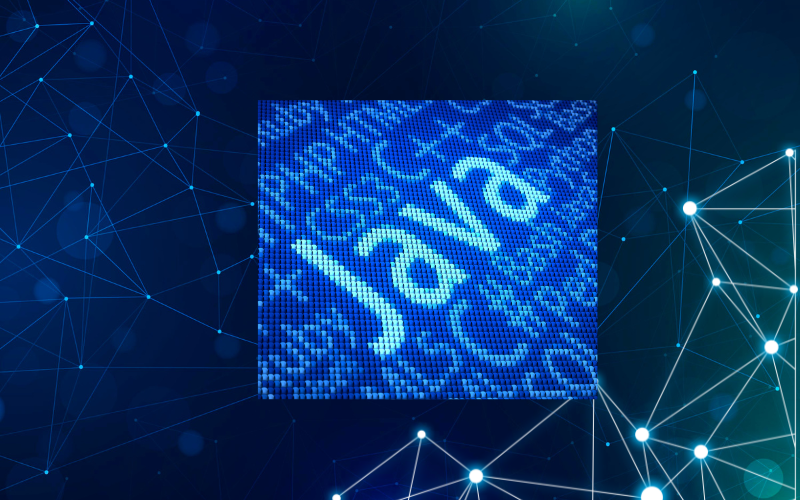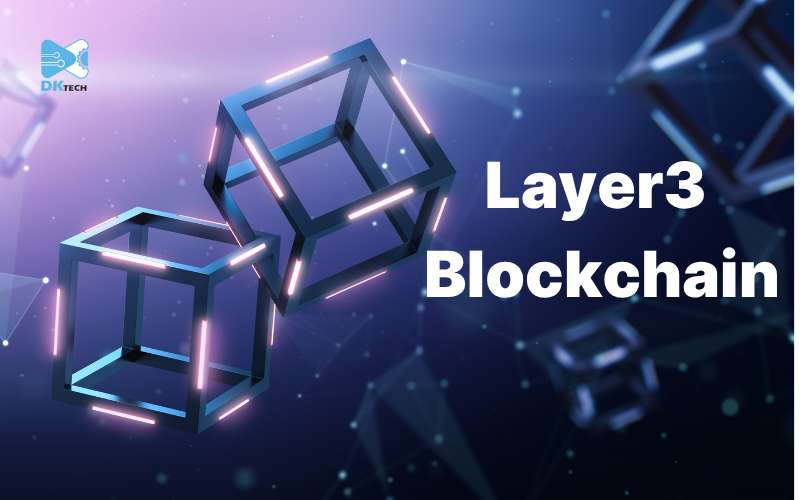Mục Lục
Blockchain là gì? Việc xây dựng một blockchain có khó không? Bắt đầu từ đâu? Nên sử dụng ngôn ngữ lập trình nào? Đây là những câu hỏi mà tôi thường xuyên nhận được từ những người quan tâm đến công nghệ blockchain. Mặc dù có rất nhiều tài liệu về blockchain trên mạng, nhưng chúng có thể phức tạp và khó hiểu. Bài viết này sẽ hướng dẫn bạn cách tạo blockchain một cách đơn giản và dễ hiểu. DK Tech sẽ hướng dẫn bạn qua các khái niệm cơ bản về blockchain và cách lập trình bằng ngôn ngữ Go (Golang).
Kiến Thức Cần Thiết Để Tạo Blockchain
Việc tạo blockchain từ đầu đòi hỏi nền tảng kiến thức vững chắc về nhiều lĩnh vực công nghệ. Dưới đây là những kiến thức cơ bản mà bạn cần nắm vững trước khi bắt tay vào tạo blockchain của riêng mình:
- Mạng (Network) – Hiểu biết về giao thức mạng, truyền thông P2P và cách các node giao tiếp với nhau trong quá trình tạo blockchain
- Mật mã học (Cryptography) – Nắm vững các thuật toán hash, chữ ký số và mã hóa để đảm bảo tính bảo mật khi tạo blockchain
- Cấu trúc dữ liệu và thuật toán – Kiến thức về linked list, hash table và các cấu trúc dữ liệu phục vụ cho việc tạo blockchain hiệu quả
- Hệ thống phi tập trung – Hiểu rõ về distributed systems, consensus algorithms và cách thức hoạt động của hệ thống không có trung tâm điều khiển
- Kiến thức về Javascript, Go hoặc Python – Thành thạo ít nhất một ngôn ngữ lập trình để triển khai ý tưởng tạo blockchain thành thực tế
Đừng lo lắng nếu bạn chưa thành thạo tất cả những kiến thức này. Bạn chỉ cần hiểu các khái niệm cơ bản để lập trình blockchain prototype đầu tiên trong hành trình tạo blockchain của mình. Việc tạo blockchain đơn giản ban đầu sẽ giúp bạn nắm vững các nguyên lý hoạt động cốt lõi, vậy nên chúng ta hãy bắt đầu với một số lý thuyết cần thiết để tạo blockchain thành công.
Blockchain Là Gì?

Blockchain không phải là Bitcoin, Blockchain không phải là tiền điện tử. Blockchain là tập hợp các công nghệ khác nhau đã tồn tại từ trước khi nó được tạo ra.
Hãy đơn giản hóa mọi thứ bằng một ví dụ về cơ sở dữ liệu MySQL lưu trữ thông tin trong các bảng khác nhau.
Với cơ sở dữ liệu trên, có một số hạn chế. Nó cho phép bạn thực hiện một số tác vụ như:
- Các thao tác tạo, đọc, cập nhật và xóa (CRUD)
- Lưu trữ cùng một thông tin hai lần
Nhưng những hạn chế của nó rất nhiều:
- Chúng ta có thể xóa toàn bộ cơ sở dữ liệu do nhầm lẫn hoặc cố ý
- Chúng ta không thể chia sẻ thông tin nhạy cảm với người khác
- Nó tập trung, có nghĩa là có một điểm lỗi duy nhất và vấn đề bảo mật
- Không có cách nào để tin tưởng mọi thứ được lưu trữ trong đó
- Những người có ý định xấu có thể xâm nhập cơ sở dữ liệu
- Cơ sở dữ liệu cần một người quản lý
- Người dùng không có quyền kiểm soát dữ liệu của chính họ
Chúng ta cần thứ gì đó khác biệt, minh bạch, đáng tin cậy và độc lập với con người. Thứ gì đó tự động, bất biến, phi tập trung và không thể phá hủy. Đó chính là lúc blockchain xuất hiện. Blockchain là một cơ sở dữ liệu và mạng lưới an toàn, đáng tin cậy, phi tập trung tất cả trong một.
>>> Tìm hiểu về công nghệ blockchain là gì?
Blockchain Hoạt Động Như Thế Nào?
Nói cách khác, blockchain là một chuỗi các block. Các block này giống như các bảng trong cơ sở dữ liệu, nhưng chúng không thể bị xóa hoặc cập nhật. Các block chứa thông tin như giao dịch, nonce, target bit, độ khó, timestamp, hash block trước, hash block hiện tại, Merkle tree và ID block. Các block được xác minh bằng mật mã và liên kết với nhau để tạo thành một chuỗi bất biến gọi là blockchain hoặc ledger.
Cùng một chuỗi sau đó được phân phối cho tất cả các node (máy tính hoặc thợ đào) trên mạng thông qua mạng P2P.
Thay vì cơ sở dữ liệu tập trung, tất cả các giao dịch (dữ liệu) được chia sẻ giữa các node đều được chứa trong các block, được liên kết với nhau để tạo ra ledger. Ledger này đại diện cho tất cả dữ liệu trong blockchain. Tất cả dữ liệu trong ledger được bảo mật bằng hash mật mã và chữ ký số, và được xác thực bằng thuật toán đồng thuận.
5 Khái Niệm Chính Trong Hệ Sinh Thái Blockchain
- Hash mật mã và chữ ký số
- Ledger bất biến
- Mạng P2P
- Thuật toán đồng thuận (PoW, PoS, PBFT, v.v.)
- Xác thực block (Mining, Forging, v.v.).
Lợi Ích Của Việc Sử Dụng Blockchain
Tăng Tính Phi Tập Trung
Blockchain loại bỏ nhu cầu về một cơ quan tập trung giám sát tất cả giao dịch, thay vào đó phân phối quyền lực giữa mạng lưới các máy tính. Thiết lập này đặt nhiều quyền kiểm soát hơn vào tay tất cả người dùng và khuyến khích phương pháp tiếp cận cộng đồng.
Bảo Mật Mạnh Mẽ Hơn
Người dùng có thể tăng cường bảo mật blockchain thông qua nhiều phương pháp khác nhau. Bao gồm kỹ thuật hash để mã hóa từng block, cơ chế đồng thuận để phê duyệt giao dịch và chữ ký số để hoạt động như một lớp bảo mật khác.
Tính Minh Bạch Cao Hơn
Mặc dù mọi máy tính là một phần của mạng blockchain đều có thể thêm và cập nhật thông tin trên blockchain, nhưng dữ liệu itself là bất biến. Mỗi giao dịch cũng được đóng dấu thời gian, giúp dễ dàng theo dõi các hành động và cung cấp tính minh bạch hơn cho tất cả người dùng.
Hiệu Quả Được Cải Thiện
Không giống như các phương pháp truyền thống, blockchain loại bỏ nhu cầu về giấy tờ cồng kềnh để ủng hộ các giao dịch số hóa. Công nghệ này cũng sử dụng smart contract để xác minh các thỏa thuận, tự động hóa các giao dịch tài chính.
Tiếp Cận Rộng Hơn
Vì blockchain chạy trên công nghệ số, nó vượt qua các ranh giới địa lý và loại bỏ nhu cầu phải ở gần trung tâm tài chính. Điều này mang lại cho nhiều đối tượng hơn khả năng tiếp cận các cơ hội tài chính.
Khi Nào Nên Sử Dụng Blockchain?

Blockchain không phải là giải pháp vạn năng, vậy nên tốt nhất là sử dụng nó khi:
- Dữ liệu được lưu trữ không thể được sửa đổi (bằng chứng tồn tại)
- Dữ liệu không thể bị chối bỏ bởi chủ sở hữu (không thể chối bỏ)
- Bạn muốn phi tập trung
- Bạn muốn một nguồn sự thật duy nhất
- Bạn muốn bảo mật cao
- Bạn không quan tâm đến tốc độ. Ví dụ, Bitcoin mất trung bình 10 phút để xác thực một block giao dịch.
Các Trường Hợp Sử Dụng Blockchain
Blockchain có thể được sử dụng trong các lĩnh vực khác nhau:
- Bất động sản: Smart contract đơn giản hóa đơn đăng ký và hợp đồng cho thuê
- Y tế: Blockchain có thể ghi lại và lưu trữ dữ liệu bệnh nhân một cách an toàn
- Tài chính: Với blockchain, người dùng có thể thực hiện thanh toán xuyên biên giới
- Chuỗi cung ứng: Các công ty có thể sử dụng blockchain để theo dõi sản phẩm từ nhà cung cấp đến khách hàng
- An ninh mạng: Do tính chất phi tập trung, blockchain có khả năng chống lại các cuộc tấn công mạng
- Chính phủ: Chính phủ có thể sử dụng blockchain để quản lý hồ sơ công cộng
- Giáo dục: Các tổ chức học thuật có thể lưu trữ dữ liệu sinh viên để xác minh điểm số và bằng cấp
- Bán lẻ: Các nhà bán lẻ có thể phát triển quy trình thanh toán hiệu quả hơn với blockchain
- Marketing: Các nhà tiếp thị có thể sử dụng blockchain để thu thập dữ liệu về tương tác của người tiêu dùng với quảng cáo
- Âm nhạc: Blockchain đóng góp vào việc cấp phép âm nhạc và quyền sở hữu trí tuệ.
Xem thêm: Công ty blockchain
Các Loại Blockchain

Có ba loại blockchain:
- Private: Chỉ được sử dụng nội bộ, và khi chúng ta biết người dùng (Hyperledger Fabric)
- Public: Mọi người đều có thể thấy những gì đang diễn ra (Bitcoin, Ethereum)
- Hybrid: Trong trường hợp bạn muốn kết hợp hai loại đầu tiên
Tạo Blockchain Của Riêng Bạn
Có hai cách để xây dựng blockchain:
- Cách dễ nhất là sử dụng blockchain mã nguồn mở có sẵn như Ethereum, Fabric, EOS hoặc Cardano, vì vậy bạn không phải đối phó với core engine, khó triển khai.
- Nếu điều đó không phù hợp với yêu cầu của bạn, bạn có thể xây dựng từ đầu hoặc fork, sửa đổi hoặc cải thiện mã nguồn mở blockchain hiện có. Phương pháp cuối cùng này khó hơn, tốn thời gian hơn và đòi hỏi nhiều công việc và một đội ngũ mạnh.
Trong bài viết này, chúng ta sẽ xây dựng một blockchain prototype từ đầu để bạn có thể hiểu rõ về state machine của blockchain. Để đạt được tốc độ, độ bền và bảo mật, hầu hết các blockchain core engine được xây dựng bằng C/C++ (Bitcoin, EOS), Go (Hyperledger Fabric, Ethereum), Java (Ethereum), Rust, Haskell (Cardano) và Ruby (Ethereum), sau đó cung cấp bindings cho các ngôn ngữ lập trình dễ sử dụng khác.
Cách Tạo Blockchain Từ Đầu Bằng Go
4 Bước Để Tạo Blockchain
- Tạo một block (khối)
- Thêm dữ liệu (header và body) vào block
- Hash block đó
- Liên kết các block với nhau
Chúng ta sẽ tạo blockchain đầu tiên bằng Go. Chúng ta sẽ hoàn thành điều này trong bốn bước:
1. Tạo Một Block
Chúng ta sẽ bắt đầu bằng việc tạo một thư mục có hai file: main.go và block.go.
main.go
go
// sử dụng package main
package main
//import package fmt
import (
"fmt"
)
func main(){
fmt.Println("Tôi đang xây dựng blockchain đầu tiên") // in ra màn hình
CreateBlock("Header sẽ được hiển thị ở đây", "body sẽ được hiển thị ở đây") // gọi hàm tạo block
}block.go
go
package main
import (
"fmt" // giúp chúng ta in ra màn hình
)
func CreateBlock(Header, Body string){
fmt.Println(Header ,"\n", Body) // Hiển thị nội dung block
}2. Thêm Dữ Liệu Vào Block
Vẻ đẹp của Go là bạn không cần import hoặc export functions, chỉ cần khai báo chúng bằng chữ cái in hoa, và Go sẽ tìm thấy chúng cho bạn.
Hãy thêm hai file nữa: blockchain.go và structures.go.
structures.go
go
package main //Import package main
// Tạo cấu trúc dữ liệu Block
type Block struct {
Timestamp int64 // thời gian khi block được tạo
PreviousBlockHash []byte // hash của block trước
MyBlockHash []byte // hash của block hiện tại
AllData []byte // dữ liệu hoặc giao dịch
}
// Chuẩn bị cấu trúc dữ liệu Blockchain:
type Blockchain struct {
Blocks []*Block // nhớ rằng blockchain là chuỗi các block
}3. Hash Block Của Bạn
block.go
go
package main
import (
"bytes"
"crypto/sha256" //thư viện crypto để hash dữ liệu
"strconv" // để chuyển đổi
"time" // thời gian cho timestamp
)
// Tạo method để tạo hash cho block
func (block *Block) SetHash() {
timestamp := []byte(strconv.FormatInt(block.Timestamp, 10))
headers := bytes.Join([][]byte{timestamp, block.PreviousBlockHash, block.AllData}, []byte{})
hash := sha256.Sum256(headers)
block.MyBlockHash = hash[:]
}// Tạo function cho việc tạo block mới
func NewBlock(data string, prevBlockHash []byte) *Block {
block := &Block{time.Now().Unix(), prevBlockHash, []byte{}, []byte(data)}
block.SetHash()
return block
}// Tạo genesis block function
func NewGenesisBlock() *Block {
return NewBlock("Genesis Block", []byte{})
}blockchain.go
go
package main
// Tạo method thêm block mới vào blockchain
func (blockchain *Blockchain) AddBlock(data string) {
PreviousBlock := blockchain.Blocks[len(blockchain.Blocks)-1]
newBlock := NewBlock(data, PreviousBlock.MyBlockHash)
blockchain.Blocks = append(blockchain.Blocks, newBlock)
}
// Tạo function trả về toàn bộ blockchain
func NewBlockchain() *Blockchain {
return &Blockchain{[]*Block{NewGenesisBlock()}}
}4. Liên Kết Các Block Với Nhau
main.go (phiên bản hoàn chỉnh)
go
package main
import (
"fmt"
)
func main() {
newblockchain := NewBlockchain() // Khởi tạo blockchain
// Tạo 2 block và thêm 2 giao dịch
newblockchain.AddBlock("giao dịch đầu tiên")
newblockchain.AddBlock("giao dịch thứ hai")
// In ra tất cả block và nội dung của chúng
for i, block := range newblockchain.Blocks {
fmt.Printf("Block ID : %d \n", i)
fmt.Printf("Timestamp : %d \n", block.Timestamp+int64(i))
fmt.Printf("Hash của block : %x\n", block.MyBlockHash)
fmt.Printf("Hash của block trước : %x\n", block.PreviousBlockHash)
fmt.Printf("Tất cả giao dịch : %s\n", block.AllData)
fmt.Println("---")
}
}Để chạy chương trình, mở terminal, di chuyển đến thư mục đã tạo và chạy go build, sau đó chạy ./go trên Linux/Mac hoặc .\go.exe trên Windows.
Như bạn có thể thấy, blockchain được cấu trúc tốt. Ngoại trừ genesis block, mỗi block đều chứa hash của chính nó và hash của block trước, điều này làm cho nó bất biến. Nếu dữ liệu trong block bị thay đổi, hash sẽ tự động thay đổi và block sẽ bị loại bỏ. Genesis block không có hash trước nào vì nó là block đầu tiên.
Kết Luận
Xin chúc mừng! Bạn vừa tạo ra blockchain đầu tiên của mình bằng Go. Chúng ta sẽ dần dần hoàn thiện các yêu cầu blockchain. Blockchain là một kiệt tác cần được thiết kế theo cách mà nó được cho là như vậy.
Trong blockchain, có hai vai trò phổ biến – blockchain engineer và blockchain developer. Blockchain engineer là chuyên gia hiểu rõ các nguyên tắc của blockchain, bảo mật và kỹ thuật phần mềm để thiết kế, phát triển, bảo trì, kiểm tra và đánh giá các blockchain core engine và phần mềm. Blockchain developer là chuyên gia xây dựng phần mềm trên blockchain được gọi là decentralized applications.
Hầu hết blockchain developer sử dụng các platform và framework blockchain mở như Ethereum, Hyperledger Fabric và EOS. Bây giờ bạn đã có kiến thức cơ bản, việc quyết định bạn muốn trở thành ai là tùy thuộc vào bạn.
Câu Hỏi Thường Gặp
Chi phí tạo blockchain là bao nhiều?
Tạo blockchain có thể tốn từ 15.000 đến 50.000 USD, tùy thuộc vào nhiệm vụ cụ thể và độ phức tạp của nền tảng hoặc ứng dụng.
Tạo blockchain có dễ không?
Điều này phụ thuộc vào loại nền tảng hoặc ứng dụng blockchain được xây dựng. Nói chung, tạo blockchain cần thời gian và yêu cầu kiến thức về các khái niệm blockchain cơ bản, một số ngôn ngữ lập trình và các thực hành tốt nhất về bảo mật số.
Cần ngôn ngữ lập trình nào cho blockchain?
Các blockchain khác nhau sử dụng nhiều ngôn ngữ lập trình khác nhau, với một số tùy chọn phổ biến là C++, JavaScript, Rust, Go và Python.



















